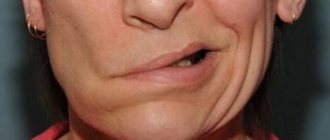Redness of the eyes – a very common phenomenon that almost everyone has encountered. Redness refers to a significant dilation of the blood vessels in the eyes, which may be accompanied by other symptoms (discomfort, tissue swelling, itching, lacrimation).
The cause of this condition can be a variety of factors, while the redness of the eyes may disappear on its own soon after the cessation of exposure to the factor that caused it, and may require long-term treatment, incl. with the involvement of related specialists (allergist, immunologist, infectious disease specialist, etc.).
Causes of red eyes
The main reasons that can cause red eyes are:
- Exposure to physical factors (wind, dust, smoke, foreign bodies)
- Infectious and inflammatory eye diseases (conjunctivitis, keratitis, uveitis, blepharitis)
- High visual stress, prolonged work at the computer, chronic fatigue
- Violation of the use of contact lenses
- Individual reaction of the body to all kinds of allergens (medicines, dust, animal hair, cosmetics, etc.)
- Some common diseases (ARVI, influenza, etc.)
Symptoms of coronavirus COVID-19
Coronavirus
COVID-19
58114 January 27
IMPORTANT!
The information in this section cannot be used for self-diagnosis and self-treatment. In case of pain or other exacerbation of the disease, diagnostic tests should be prescribed only by the attending physician. To make a diagnosis and properly prescribe treatment, you should contact your doctor. Definition
The SARS-CoV-2 virus spreads in microscopic particles of fluid released by a sick person during coughing, sneezing, talking, singing or heavy breathing and gets onto the mucous membranes of the nose, mouth or eyes of another person.
In addition, the virus can also spread through household contact, when particles with the virus located on surfaces or objects enter the mucous membranes of the respiratory tract through the hands.
Aerosol transmission occurs in closed, crowded and poorly ventilated areas.
The airborne dust (aerosol) transmission route is realized through the spread of aerosols (droplet nuclei) suspended in the air, the size of which is <5 microns. Due to their small size, aerosols can be transported over long distances and remain in the air for several hours. It must be remembered that aerosol-producing devices (nebulizers, halochambers, etc.) are prohibited for use in healthcare institutions during the COVID-19 pandemic.
Symptoms of mild COVID-19
Most common symptoms
- The main symptom (80-90%) is any increase in body temperature (even low-grade - 37-37.5°C).
- The cough is dry or with a small amount of sputum (60-80%).
- Increased fatigue (40-50%).
Less common symptoms
- Sudden loss of smell and/or taste (60-80%).
- Nasal congestion or mild rhinorrhea (5%).
- Conjunctivitis or redness of the eyes (1-2%).
- Sore throat (14%).
- Headaches, dizziness (8-14%). Immediately after the end of the incubation period, migraines of varying severity may appear.
- Pain in joints and muscles (11-15%).
- Skin rashes (8%).
- Diarrhea, nausea, vomiting (up to 20%).
- Chills (11-13%).
Those who have had a mild form of COVID-19 infection compare the sensations with the course of a common respiratory disease.
Symptoms of COVID-19 in severe and moderate forms of the disease
Most common symptoms
- Shortness of breath, rapid breathing (55%).
- Increased cough, appearance of sputum (30-35%).
- Hemoptysis (5%).
- Loss of appetite (20%).
- Confusion (9%).
- Sensation of constriction and congestion in the chest (> 20%).
- Body temperature above 38°C (80%) for more than 5 days.
- Blood oxygen saturation according to pulse oximetry (SpO2) ≤ 95% (up to 20%).
Less common symptoms
- tachycardia,
- vitamin D deficiency,
- irritability,
- convulsions,
- anxiety,
- depressed state
- sleep disorders.
Important! Symptoms may not be detected during the incubation period of COVID-19 or may appear in any combination (for example, without fever). The exact diagnosis is determined by the doctor based on the results of examinations.
Patients over 65 years of age may experience an atypical picture of the disease, which includes delirium (cloudedness of consciousness), speech impairment, movement disorders, as well as more severe and rare neurological complications - stroke, inflammatory brain damage, and others.
The majority (about 80%) of patients who develop symptoms recover without hospitalization. Approximately 15% of patients develop a severe form of the disease that requires oxygen therapy, and 5% develop an extremely severe form that requires treatment in an intensive care unit.
Differences between the new coronavirus disease COVID-19 and ARVI and influenza
COVID-19 also refers to ARVI - acute respiratory viral infections characterized by similar symptoms: cough, runny nose, fever, headache, sore throat and sore throat. The most clearly defined clinical picture is caused by influenza viruses, parainfluenza, and adenoviruses. Coronavirus can be more severe than other acute respiratory viral infections, leading to complications and even death. That is why it is extremely important to distinguish the new type of coronavirus from a relatively harmless cold.
What is the difference between coronavirus and ARVI?
- Longer incubation period. For ARVI, 2-3 days are enough to go into the acute phase, but coronavirus takes up to 2 weeks.
- Unlike other acute respiratory diseases, coronavirus causes a low body temperature of 37-37.5°C, which can last a relatively long time (up to 7 days).
- A cough when infected with coronavirus is often long-lasting, dry, painful and may be accompanied by chest pain.
- Coronavirus infection can cause digestive upset (diarrhea, nausea, vomiting); such phenomena are rare with ARVI in adults.
- ARVI is usually cured in 7-10 days, and COVID-19 on the 7-8th day in a certain percentage of people can move to the next stage, when shortness of breath and respiratory failure appear.
Only a laboratory test will help you accurately name the type of pathogen and establish the disease (coronavirus, ARVI, influenza).
What is the difference between coronavirus and flu
It should be noted that COVID-19 and influenza have much in common:
- transmitted by airborne droplets and contact;
- may manifest as aching joints, headache, severe weakness and a general feeling of weakness;
- Intestinal disorders may occur.
Main differences:
- The flu begins acutely with an increase in temperature immediately to febrile values (39-40⁰C). Symptoms of general intoxication come to the fore: headache, weakness, pain in muscles and joints, lacrimation, pain in the eyes.
- Coronavirus develops gradually - from general malaise in the first days to severe symptoms, including a significant increase in body temperature after a week.
It is important that a doctor determine the difference between coronavirus and influenza, since both diseases can lead to dangerous complications, including pneumonia.
If a person has the flu and not coronavirus, he also needs medical care and treatment under the supervision of a therapist. Other diseases with similar symptoms
Pneumonia, including atypical.
Allergies. Shortness of breath, problems with smell, and other symptoms may occur as a result of exposure to allergens. The problem is solved by antihistamines, which are ineffective for viral infections.
Bronchial asthma, which also makes itself felt by difficulty breathing and a painful cough, but is non-infectious in nature.
Are symptoms different in children and adults?
Children make up only about 2% of all COVID-19 cases. At the same time, they tolerate coronavirus infection more easily and are often asymptomatic carriers.
The course of COVID-19 in children of different ages:
From 1 year to 3 years
The infection usually manifests itself as a mild illness. There are no characteristic symptoms of COVID-19. Sometimes there is a loss of appetite, which goes away after 2-3 days and does not affect the baby’s general well-being.
From 3 to 7 years
Children at this age are sick for about seven days and recover without complications. They may experience hoarseness and mild nasal congestion. There is no cough, occasional sneezing is possible.
From 7 to 17 years old
Primary schoolchildren and adolescents may experience a slight increase in body temperature and mild malaise. A dry cough is possible, and even less often - a headache.
According to Rospotrebnadzor, a mild form of the disease is usually due to the patient’s strong immunity.
The immune system of children and adolescents is usually well prepared to fight viruses. They can become infected, but their disease is milder or completely asymptomatic.
Stages of disease development taking into account symptoms
Symptoms of coronavirus in an adult by day
1-3 days. The disease begins with mild malaise, a slight increase in temperature, nasal congestion and muscle pain, as with ARVI or influenza.
3-5th day. Body temperature rises, and a mild, superficial cough is possible. The sense of smell may disappear, and taste sensations may change greatly. Digestive disorders occur, including diarrhea. This period is considered the culmination of a mild form of COVID-19.
5-10th day. An important period for determining the severity of coronavirus infection. 80% of people sick with COVID-19 experience improvements, which can lead to a full recovery in a few days. The second scenario involves a worsening of the condition, which is manifested by an increase in the number and severity of symptoms. With this development of events, the patient develops a severe runny nose, debilitating cough, chills, body pain, and shortness of breath.
10-12th day. This period is characterized by severe shortness of breath, chest pain, progression of weakness, and pallor, which indicates the development of pneumonia. Damage to the lungs leads to oxygen starvation. Hospitalization required. This condition is considered moderate.
12-14th day. With COVID-19, 75% of patients with viral pneumonia begin to recover on average 2 weeks from the onset of the disease. However, those who develop severe disease may require mechanical ventilation.
14-30th day. It takes on average up to two weeks from the onset of a serious complication to recover from a severe form of pneumonia caused by coronavirus.
But even after complete recovery, mild shortness of breath may persist, weakness and malaise may appear for a long time (up to several months).
Clinical variants and manifestations of COVID-19
- Affects only the upper respiratory tract.
- Pneumonia without respiratory failure.
- Acute respiratory distress syndrome (pneumonia with acute respiratory failure).
- Sepsis, septic (infectious-toxic) shock.
- Syndrome of disseminated intravascular coagulation, thrombosis and thromboembolism.
- Blood oxygen saturation is less than 88%.
Patients with critical COVID-19 develop vascular endothelial dysfunction, bleeding disorders, thrombosis, and thrombotic microangiopathy.
A cytokine storm in COVID-19 is the body’s response to an inflammatory process, leading to immune cells attacking not only the virus, but also the tissues of the body’s own. The consequence of this can be the destruction of tissues and organs, and, as a consequence, the death of the body.
It is very important that sometimes COVID-19 is dangerous not only because of pneumonia and its complications, but also because it has a negative effect on blood vessels, the brain and the heart, which increases the risk of stroke. In such cases, the patient experiences dizziness, fainting may occur, the face turns blue and the muscles become numb.
Symptoms indicating the healing process
Attention!
The time intervals for the course of the disease are arbitrary; they depend on the individual characteristics of the organism. COVID-19 in mild form usually lasts no more than 14 days. But only an antibody test can confirm final recovery. Given the severity of the disease, the recovery process can take place in different ways. The criterion for recovery is if two consecutive tests for coronavirus using the PCR method gave a negative result.
Treatment
Depending on the cause that caused the redness of the eyes, the treatment approach will be different. So, if redness is a consequence of overwork or eye fatigue, the best treatment method would be proper rest and normalization of the daily routine to prevent the occurrence of this complaint in the future. Eye gymnastics and a short-term (5-10 minutes) cold compress on the eye area are suitable as first aid for tired eyes.
If redness of the eyes is caused by physical factors, eye drops from the “artificial tears” group (Systane, Lycontin Comfort, Hilo-Komodo) can be an excellent way to reduce eye irritation and discomfort. The composition of drugs in this group includes hyaluronic acid, which promotes the formation of a protective film on the surface of the mucous membrane of the eye, protecting the eyes from damage.
Anyone who uses contact lenses would do well to remind them of the need to strictly adhere to the wearing regimen recommended by their doctor. Incorrect selection of lenses, failure to comply with hygiene requirements, and the use of expired or worn contact lenses can cause serious eye damage and vision impairment. Soothing and moisturizing eye drops will help mitigate the consequences for the eyes, as well as temporarily stopping the use of contact lenses to allow the mucous membrane of the eyes to fully recover.
Eye inflammation caused by pathogens always requires appropriate treatment. The sooner such treatment is started, the faster the recovery will occur. For a complete cure, it is necessary to follow all the recommendations of the attending physician (frequency of use of medications, duration of therapy). The prescribed treatment should be continued even if the unpleasant symptoms are eliminated, since an untreated infection is prone to relapse. Without adequate treatment, eye inflammation can become chronic, which can lead to vision impairment.
If the cause of red eyes is an allergy, you should, if possible, identify its source and try to avoid contact with the allergen in the future. Antihistamines in the form of eye drops (cromohexal, opatanol) or tablets (erius, cetirizine) will help eliminate allergy symptoms.
Types of skin diseases around the eyes and eyelids
Among the huge number of diseases caused by inflammation of the eyelids, several of the most common groups can be distinguished:
- bacterial lesions of the skin of the eyelids (abscess of the eyelid, phlegmon);
- inflammatory diseases of the glands and edges of the eyelids (blepharitis, barley, chalazion, meibomitis, demodicosis);
- violations of the shape and position of the eyelids (entropion, eversion, ptosis, lagophthalmos);
- allergic diseases (eczema, dermatitis, angioedema);
- developmental abnormalities of the eyelids and tumors (coloboma, papilloma, lipoma, nevus).
Bacterial lesions of the skin of the eyelids
Abscess of the century
An abscess is inflammation and redness of the eyelid with the formation of a cavity filled with pus. Often an abscess appears after an infected eyelid wound.
Causes of eyelid abscess:
- ulcerative blepharitis;
- boils;
- barley;
- purulent processes in the paranasal sinuses and orbit of the eye.
Sometimes the abscess opens on its own, and the inflammation subsides. But in most cases, a non-healing fistula appears at the site of inflammation.
Treatment of an abscess is sanitation of the eyelids and opening of a purulent formation on the eyelids with the mandatory use of antibiotics and sulfonamides.
Phlegmon
Cellulitis is an extensive inflammation of the tissues of the eyelid that occurs against the background of untreated stye. It is characterized by fever, headache, severe swelling of the eyelid and redness of the skin.
Treated with antibacterial agents, antihistamines.
Inflammatory diseases of the glands and edges of the eyelids
Blepharitis
Blepharitis is an inflammation of the eyelids, which causes redness, burning, itching and pain on the skin.
The following types of blepharitis are distinguished: allergic, meibomian, demodectic, infectious, scaly. Read more about blepharitis here.
Barley
Barley is an acute, infectious inflammation of the eyelids, resulting from pathogens entering the eyelash hair follicle or the sebaceous gland of the eyelid. Visually, stye looks like a small nodule on the eyelid.
You can read about how to properly treat stye on this page.
Meibomyitis and chalazion
Meibomyitis and chalazion are diseases associated with the appearance of a pathological process in the meibomian glands.
Meibomia appears when the duct of the sebaceous gland of the eyelid is clogged. Characterized by an acute course of the disease.
Chalazion is a chronic form of meibomitis. If a chalazion is left untreated for a long time, it turns into an eyelid cyst. Sometimes, for diagnostic purposes, it is necessary to puncture the eyelid cyst to identify the nature of the neoplasm.
Treatment and removal of a cyst on the eyelid occurs using classical techniques or laser treatment.
For more information about the symptoms and treatment of this pathology, see here.
Demodicosis
A disease of the eyelids caused by the Demodex mite. It is characterized by the appearance of yellow mucus in the eyes, gluing and breaking of eyelashes, itching and burning of the eyes.
To cleanse the eye from foci of infection, cleaning (sanitation) and rinsing of the lacrimal ducts are used. Read about the treatment of demodicosis on this page.
1 Diseases of the skin around the eyes and eyelids. Diagnosis and treatment
2 Diseases of the skin around the eyes and eyelids. Diagnosis and treatment
3 Diseases of the skin around the eyes and eyelids. Diagnosis and treatment
Violations of the shape and position of the eyelids
Turn of the century
When the eyelid is inverted, its main edge is turned onto the eyeball. Because of this, the eyelashes touch the surface of the cornea and conjunctiva, the eyes become red, irritated, and tears constantly flow from them.
Causes of pathology:
- convulsive or spastic contractions of some parts of the orbicularis oculi muscle;
- cicatricial contractions of the conjunctiva and cartilage of the eyelid that occur in certain chronic eye diseases (for example, trachoma).
The most effective method of treatment is surgery. Plastic surgery for entropion of the eyelid is also possible.
Eversion of the century
Ectropion is an inversion of the edge of the eyelid. With this inflammation of the eyelid, the conjunctiva turns out in a certain area or throughout the entire eyelid, which leads to its drying out.
The fact that the eye is constantly open, even at night, contributes to clouding of the cornea, the appearance of keratitis and other diseases.
Causes of eversion of the eyelid:
- age-related changes in the eye with sagging of the lower eyelid;
- paralysis of the orbicularis oculi muscle;
- tightening of the skin of the eyelids due to injuries, burns (cicatricial eversion), systemic diseases of the body.
First, it is necessary to eliminate the main causes that caused this disease. Surgical procedures can then be used.
Ptosis
Ptosis is an abnormally low position of the upper eyelids in relation to the eyeballs. This leads to vision defects and rapid eye fatigue. Ptosis can be congenital or acquired.
Causes of ptosis:
- damage to the oculomotor nerve;
- damage to the muscle that elevates the upper eyelid;
- strokes, encephalitis and other neurological diseases.
Treatment of the disease is mainly surgical.
Lagophthalmos
Lagophthalmos is incomplete closure of the palpebral fissure, which leads to damage and drying of the cornea and conjunctiva.
Causes of the disease:
- eyelid injuries,
- jades,
- short eyelids from birth.
In addition to treating the underlying disease, artificial tears and disinfectant drops are prescribed. In severe forms of the disease, surgical intervention with partial suturing of the palpebral fissure is used.
Allergic inflammation of the eyelids
Allergic diseases of the eyelids are accompanied by severe itching, swelling and inflammation of the eyelids.
In eczema , the skin of the eyelids is covered with papules, vesicles and pustules. Characteristic rashes appear not only on the skin of the eyelids, but also on the body. The pathology develops after suffering eyelid dermatitis or contact with allergens. At the end of the disease, crusts and serous exudate appear on the skin of the eyelids.
Characteristic signs of urticaria are swelling of the eyelids, itching and burning of the skin of the eyelids. Subsequently, blisters appear on it.
With contact dermatitis , 6 hours after contact with the allergen, swelling and inflammation of the eyelids develop with itchy papules and vesicles. Usually both eyes are affected at once.
Treatment of allergic inflammation of the eyelids is medicinal.
1 Diseases of the skin around the eyes and eyelids. Diagnosis and treatment
2 Diseases of the skin around the eyes and eyelids. Diagnosis and treatment
3 Diseases of the skin around the eyes and eyelids. Diagnosis and treatment
Anomalies of eyelid development and tumors
Coloboma
Coloboma of the eye is one of the most unpleasant diseases, which is expressed in the absence of some eye membranes. Coloboma of the eyelid is the most common. The pathology appears on the upper eyelids, but sometimes affects the lower eyelids too.
Coloboma is usually triangular in shape, where the base of the triangle is the ciliary edge of the eyelids. Since the defect affects all layers of the organ of vision, there are no eyelashes and glands in the area of coloboma.
In most cases, it is congenital, but can also occur as a result of injury and other illnesses. Another type of congenital coloboma, iris coloboma, is one of the main causes of vision loss in childhood.
Coloboma is a serious danger to the eye, as it leads to degeneration of the cornea, keratitis and other secondary diseases of the organs of vision, as well as blindness!
The most effective treatment for coloboma is surgery. Surgery for coloboma involves excision of damaged tissue and movement of a musculocutaneous flap to the site of the defect. With the help of plastic surgery, the correct edge of the eyelids is formed, which prevents the appearance of ptosis, entropion, and other complications.
Benign formations of the century
Papilloma of the eyelids
Papilloma appears on the lower eyelid usually in people over 60 years of age.
It grows slowly, looks like gray-yellow papillae, and has a spherical or cylindrical shape. In 1 case out of 100, papilloma can turn into cancer. Treatment of eyelid papilloma is surgical.
Senile wart
A senile wart is a flat and even formation of brown, yellow or gray color. It grows in older people along the lower ciliary edge of the eyelids. Treatment: cryodestruction or laser removal.
Cutaneous horn
The cutaneous horn is a dirty gray formation protruding above the eyelid. Electro- and laser excision are used for treatment.
Nevi
Nevus (or mole ) is a benign formation on the skin, from light brown to black. Nevi on the eyelid can be inherited, appear due to long exposure to the sun, disruptions in the hormonal system, or after taking certain medications. Hanging moles can appear in old age. If the formation does not bother you, there is no need to treat it.
If unpleasant symptoms appear: itching, pain, growth, blurred vision, you must consult an ophthalmologist to investigate the nature of the mole and receive the necessary treatment.
Atheroma
Eyelid atheroma ( epidermal cyst ) is a painless, dense formation that appears on the eyelid due to blockage of the sebaceous gland ducts.
Over time, the atheroma begins to increase in size and can impair vision. In this case, surgical procedures are performed. After removal of atheroma of the eyelid, there are usually no complications.
When to see a doctor
If you have any of the complaints listed below, you should consult a doctor as soon as possible:
- headache, pain in or around the eyes
- discharge from the eyes, lacrimation, photophobia
- nausea or vomiting
- visual impairment
These symptoms may indicate a serious illness that requires an immediate visit to the doctor. By contacting the Moscow Eye Clinic, you can be sure of a quick and reliable diagnosis of eye redness and its effective treatment. All questions you are interested in can be asked to specialists by calling 8 and 8 (499) 322-36-36 or online using the appropriate form on the website.
Fomenko Natalia Ivanovna








